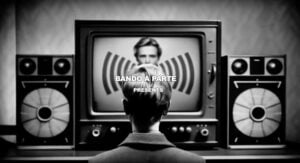ButSpeak.com
News which Matters.

Portuguese filmmaker Edgar Pêra explores the potential of AI in his new film Telepathic Letters, which delves into the connections between H.P. Lovecraft and Fernando Pessoa, and shares his thoughts on technology’s impact on art.
Portuguese filmmaker Edgar Pêra, known for his inventive approach to cinema, is set to premiere his latest work, Telepathic Letters, at Locarno77. This film, which will screen out of competition at the prestigious Swiss festival, explores the mysterious connections between famed cosmic horror writer H.P. Lovecraft and acclaimed poet Fernando Pessoa. However, what truly sets this film apart is its creation: Pêra employed generative AI to bring his vision to life, making Telepathic Letters a pioneering piece in the evolving relationship between art and technology.
Pêra, who has always been fascinated by cutting-edge technology, likens his use of cinematic tools to playing with toys. “I [have] always used cutting-edge technology, but always in a low-budget mode. Every time there’s something new, I’m interested in it, because I see cine-technology mostly as a set of toys,” Pêra explains. For him, filmmaking is a playground where he can invent his own rules, much like Pessoa’s belief that artists create new universes rather than merely reproducing the existing one.
His journey into AI began after completing his previous film, The Nothingness Club. Feeling unchallenged by the traditional process, Pêra found himself drawn into the world of AI-generated imagery. “After September 2, 2022, I started to write prompts to create images, and within a year my life changed,” he recalls. The filmmaker became captivated by the possibilities AI offered, particularly in how it could blend the identities of Lovecraft and Pessoa, two figures known for their complex personas.
The development of Telepathic Letters took a transformative turn when Pêra began using a four-second movie generator in 2023. The initial results, though crude, captivated him. These early, imperfect images embodied the essence of “found footage that never existed,” adding a layer of authenticity to the film’s exploration of the surreal connections between its subjects.
While AI’s growing influence in the art world has sparked fear and controversy, Pêra remains optimistic about its potential, even as he acknowledges the risks. He recognizes that business-driven decisions could lead to the replacement of human creatives with machines, a trend already seen in various industries. However, Pêra differentiates between the commodification of entertainment and the creation of true art. “If we are talking about making art, that is a different thing,” he says, emphasizing that Telepathic Letters was made with the same level of human collaboration as any of his previous films.
For artists navigating the AI era, Pêra offers a piece of advice: maintain your identity and voice. “If you make films with only one style, AI will use your style,” he warns, drawing parallels to issues of plagiarism that existed long before AI’s rise. For Pêra, the key lies in staying true to one’s creative principles, even as the tools of the trade evolve.
As Telepathic Letters prepares to make its debut at Locarno77, Pêra’s experiment with AI underscores the complex interplay between tradition and innovation in the arts. His film stands as both a testament to the possibilities of new technology and a reflection on the enduring human element at the heart of artistic expression.